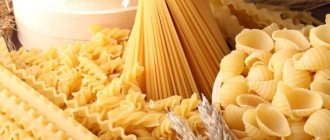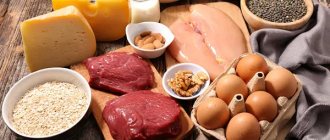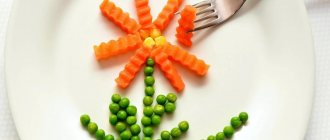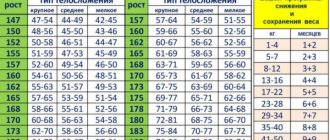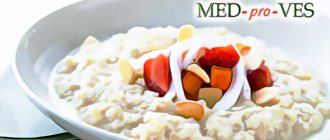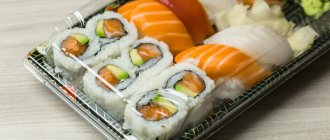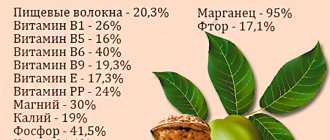Are there those among us who don't like pasta? Undoubtedly, there are those who do not allow them for dinner, but it is simply impossible not to love them. And, if we are talking about long strings of spaghetti, then only a few can resist... Spaghetti is our favorite type of pasta - pasta. Their homeland is Italy, and to be precise, its southern part is Naples. This type of pasta received its name in 1842 thanks to Antonio Viviani, who called them so for their resemblance to twine laces, which in Italian sounds “spago”.
History of pasta
Disputes about which country became the birthplace of pasta continue to this day. Various sources claim that pasta was invented in China, and the great European traveler Marco Polo brought it to Italy. There is another version that says that modern Tuscany, which was located on the site where the ancient Etruscan civilization once lived, became the birthplace of pasta. In one of the Etruscan tombs, tools were found that were similar to those used to wrap pasta. And this happened 500 years earlier than the Chinese invented the product.
Drying spaghetti in Naples, 19th century The Italian writer Giulielmo di Malavalle in the 12th century described in his book a banquet at which a dish of pasta mixed with sauce was served. Time passed, and in the 13th century the question of storing the product arose, namely, drying pasta. This need arose as a result of the emergence of maritime republics such as Genoa, Venice, Amalfi and Pisa. What was needed was a product that could be stored well for many months on board a ship. Naples was the first to produce dried pasta. In the 16th century, pasta was consumed in Italy as a festive treat, for which an occasion was needed. The product was produced at that time from the most expensive durum wheat varieties and was available only to the upper class. And even among the rich, pasta was sometimes served exclusively for dessert. It was only in the 17th century that pasta became the daily food of Italians in the southern regions of the country. Experience and opportunities for growing durum wheat appeared, so the dish became available to poorer segments of the population.
Spaghetti seller
The first pasta production company appeared in 1827. Today it operates and is considered one of the largest pasta factories in Italy.
Breakfast Pasta Recipes You Hoped to Be Just Like This
“Breakfast and pasta” may not seem like two words with one meaning. But if you think about it, is pasta just another grain and not a grain often part of a healthy morning meal?
So while dishes like egg pasta or honey feta orzo may seem strange, we promise it won't take you long to use them once you realize how delicious they are. Plus, let's be honest, aren't we all looking for more reasons to eat pasta?
1.Fontina Spinach and Artichoke Breakfast Pasta Hash
From spinach and mushrooms to eggs and cheese to pasta and even bacon, this hash truly has it all. While this is definitely on the heavier side of the spectrum, it's also perfect for special occasions, brunches, or when you're really, really hungry.
Breakfast Carbonara
It's a mystery why more people don't consider carbonara a breakfast food, given that it contains both bacon and eggs. However, it's never too late to start enjoying a cup of it in the morning—and it's so good, you don't need to. a lot of time to get used to.
Brunch Spaghetti with asparagus and baked egg
Eggs and asparagus are an underrated but absolutely dynamite combination. Add both to a pile of whole grain pasta, slather everything in a light, creamy yogurt sauce, and grab your new favorite single-serve breakfast.
Healthy Tex-Mex Breakfast Lasagna
"Healthy" and "Tex-Mex" aren't usually two words in the same sentence, but this lasagna can pack a ton of nutrients while still being the same. - ribs. With pinto beans, eggs and parmesan, it's full of filling protein and can easily be made vegetarian and gluten-free.
Mexican Breakfast Pasta
You could call it pizza, but instead of using a crust, this recipe is based on a pan. Beans, cheese, and jalapeños give it a Mexican twist, while easy eggs elevate it to breakfast status.
Indian Vermicelli Upma
You'll find these noodles on breakfast tables all over South Asia - now get some for yourself. With vegetables and vermicelli, mustard seeds and even ketchup for seasoning, this is a fun fusion dish for anyone who loves a zesty and spicy start to the day.
Pasta with cabbage mushrooms and soft-boiled egg
For many of us oat lovers, vegetables aren't a common breakfast component, but this recipe might change that. Filled with mushrooms and kale, it'll help you hit your five-day goal, but you also still get the buttery cheese spread as part of the deal.
Pasta Omelette
Filling, forgiving and quick, the omelet is great for using up random ingredients in the fridge, but it's far from a one-time meal. This one includes leftover cooked pasta, a few veggies, and cheese for a complete, nutrient-dense breakfast that only takes about five minutes to prepare.
Breakfast pasta with tomatoes, basil and mushrooms
This bake involves a few extra steps, but some of them can be made ahead, making it a great dish to entertain during brunch or meal prep. Plus, if you try the gooey egg yolk, rich tomato sauce, and cheesy spread, all of these the extra effort will pay off.
Honey Feta Orzo
Inspired by a traditional Bulgarian breakfast, this sweet and savory bowl may contain ingredients you never thought of putting together, but the combination is as delicious as it gets. Don't be surprised if this replaces your bowl of oats several times a week.
Breakfast Pasta Casserole
This elbow macaroni bake is the perfect balance of healthy and filling, loaded with chicken sausage and cheese, plus a generous helping of veggies for some much-needed morning fiber. Bonus points if you use whole-wheat pasta for extra vitamins.
Pepper omelette with pasta and eggs
Passed down from generation to generation, this recipe has long been a staple in this blogger's family - and for good reason. The combination of elbow macaroni and creamy scrambled eggs is unexpectedly good and qualifies as serious comfort food. Watch this become a regular breakfast in your home.
Grandma's Noodles Kugel Makover
Made with low-fat dairy, a mixture of whole eggs and egg whites, and gluten-free fettuccine, this kugel is a lighter version of the classic egg noodle dish, but just as delicious. Don't be put off by the combination of cracker crumbs and cheese spread—it sounds a little wacky. but it works great.
Everything, bagel, pasta, sesame, noodles
The refined carbs and gluten from everything in a bagel may not be everyone's cup of tea, but you'd be hard-pressed to find anyone who doesn't love the spice blend made from dried poppy seeds. onions, garlic, etc. Skip the wheat and keep the seasoning for the brown rice pasta. And to prove that not every breakfast needs eggs, this menu uses tofu instead of quality vegan protein.
Milk soup with pasta
If you can mix rice with milk, cinnamon and sugar and call it pudding, there's no reason you can't do something similar with pasta. This Eastern European breakfast favorite may seem like an acquired taste and texture to some, but as with all acquired tastes, you'll trust them as it grows on you.
.
The benefits of pasta
In Italy they do not know pasta made from soft wheat, so spaghetti is considered to be a rather healthy product. Their production is based on durum wheat flour, which makes the product healthy. Such pasta contains a lot of fiber, which promotes weight loss and cleanses the body clogged with toxins.
Spaghetti made from durum wheat contains B vitamins, which are simply necessary for the female body, as well as vitamin E, which binds free radicals and prevents the aging of the body. In addition to vitamins, pasta contains amino acids and fiber, which help cleanse the body. In addition, “proper” pasta contains a significant amount of protein, making it an indispensable dish in the diet of vegetarians.
How to cook properly
To cook 100 g of pasta, you need to take 1 liter. water. The cooking time is usually indicated on the package. You shouldn't overcook them. Slightly undercooked ones retain maximum useful fiber.
The water must be salted first - this will prevent sticking during cooking. It is better to cook without a lid, but you need to stir once during cooking.
To preserve maximum vitamins, it is not recommended to rinse the finished food in cold water. A high-quality product will be crumbly without this. If you're worried about the finished pasta clumping, leaving a little water in the bottom of the pan will prevent it from drying out.
The water in which the products were cooked should not become cloudy. The last sign may indicate that they are made from soft wheat. Because The presence of large amounts of starch contributes to cloudiness of water.
Rules for eating spaghetti
Rule #1. It may seem that the new way of eating spaghetti using a fork and spoon is an option that can be used in Italy. This is a misconception. Spaghetti is eaten only with a fork and these are the rules. Rule #2. The length of real and most correct spaghetti is 24 centimeters. And this is the right size for wrapping pasta strings around a fork. Therefore, if you suddenly feel like you need to cut the spaghetti with a knife before putting it in your mouth, it’s better to leave this idea. Italians will not understand you, because they firmly believe in the ideal size of their favorite spaghetti. Rule #3. Spaghetti is served in a deep, one might say, soup bowl. Do not rush to stick your fork into the middle of the dish and shake it until the entire portion is on it. Even though this is the easiest thing to do, it will be much more difficult to put it in your mouth later. Therefore, it is better to adhere to the established rules and be content with two or three pasta at a time. It is best to separate two or three strings of spaghetti from the main mass, moving them to the free space of the plate, and wind them clockwise around a fork. Rule #4. Remember, spaghetti is primarily a family dish. And not because it is so customary in Italy, but because it is served in a sauce that can splash and smear you and your neighbor at the table. Therefore, spaghetti is not for receptions and important negotiations, it is for a warm and cozy circle of close people in front of whom you can be yourself. Rule #5. In the event that the portion is eaten, but the sauce remains in the plate, a method with a melodic Italian name “scarpetta” is suitable, which means “lady’s slipper”. You can dip the bread or focaccia in the remaining sauce and eat, although this method is not for trick-or-treating.
Nutritional value and calorie content of pasta
Before talking about the benefits or harms of pasta, you need to know the nutritional value and calorie content of the product.
As a rule, these products are boiled. The nutritional value of the dry product is from 327 to 351 Kcal, after cooking - no more than 80 Kcal.
You can learn more about the benefits of pasta for the body from the video below:
Spaghetti sauces
It is generally accepted that the most important thing about pasta is the sauce with which it is served. The classic method of serving pasta is to combine it with various sauces. It is worth noting that we are not talking about the ketchup or tartar sauce that you can buy in the store, but about the classic Italian recipe, which is prepared specifically for spaghetti from fresh ingredients.
List of classic Italian sauces: ✔ Bolognese sauce - tomato sauce with minced meat, red wine and herbs. ✔ Carbonara sauce – finely chopped and fried bacon, stewed in cream with the addition of Parmesan cheese. ✔ Norma sauce is a tomato sauce with the addition of pork fat and a lot of onions. ✔ Arribiata sauce is a spicy sauce made from tomatoes, peppers and a lot of spices. ✔ Florentina sauce - creamy sauce with mascarpone cheese and spinach. ✔ Napoletana sauce - tomato sauce with fresh herbs and vegetables. Knowing this list of classic sauces, you can easily order pasta in any Italian trattoria, even without knowing the language. The fact is that pasta is usually called by the name of the sauce with which it is served.
Spaghetti Museum
Spaghetti is a food that can be easily combined with many foods. That is why the whole world fell in love with spaghetti and the tradition of Italian dinner is characteristic not only of Italy, but also of New York, Paris, and Minsk. Feel free to choose a package of spaghetti at your nearest hypermarket and delight your family with new culinary adventures without leaving home!
At what age can pasta be given to children?
Since boiled pasta or soups with it are one of the favorite dishes in Russian families, they are also given to young children. This is not prohibited, you just need to know when the child’s body can digest the product.
Regular pasta can be given to babies from 12 months, although pediatricians advise including it from 1.5-2 years. At this age, children have enough teeth to chew.
Advice! It is best to buy special products specifically for children, or you can feed babies from 8-9 months.
A child needs pasta for:
- strengthening the immune system,
- hair and teeth growth,
- activation of blood renewal processes.
Not much and only at lunch
A pasta diet will not give results, but, on the contrary, will lead to weight gain if, in addition to pasta, you eat other high-calorie dishes during the day or start serving yourself large portions of spaghetti, fettuccine, penne. There can be no more than 100-150 g of ready-made pasta on your plate, and you must eat it at lunch and not for dinner, otherwise the carbohydrates will not have time to be used up and will be stored in reserve. Well, and the most important thing is that you can sit on pasta for a week, but you still shouldn’t continue to eat it every day: it will be too much in terms of calories. Whatever one may say, Italians have a different climate, lifestyle, diet, temperament and metabolism from ours. Therefore, it’s still not worth blindly copying their menu.
Pasta for weight loss. Pasta diet for weight loss
When losing weight, durum pasta can be included in the diet not only as an additional ingredient, but also as its main component. It is important to follow the rules of nutrition and remember that you should not expect rapid weight loss. Judging by the reviews, if you follow all the instructions, you can lose about 5 kg in a month. The dishes can be changed at your discretion: for example, for dinner you can cook not pasta with vegetables, but a casserole. An approximate pasta diet is described in detail in the table below:
What to eat with
100 g of product contains 30% of the daily requirement of vitamins, fats, proteins and carbohydrates. A diet that includes pasta can be beneficial for diabetes and cardiovascular diseases. So what can you eat pasta with if you want to lose weight? Only with low-calorie foods. Eating fatty sauces and dressings will ruin all your efforts. It is worth combining pasta with low-fat fermented milk products, lean meat, rice, cheese, and fish. Ideal ingredients include:
How to cook properly
To ensure that the product does not lose its beneficial properties and does not stick together to a pulp, you need to know how to prepare it correctly and in a dietary manner. Italians consider undercooked pasta to be the ideal state of readiness, otherwise it sounds like “al dente”. This means that they should be soft on the outside, but elastic on the inside. This state can be achieved by following the recipe below:
- The amount of water that needs to be poured into the pan is measured as follows: take 1 liter per 100 g.
- Place on medium heat and bring to a boil.
- When it boils, add a pinch of salt, a small amount of extra virgin olive oil and add the products.
- It is necessary to stir the pasta all the time, especially in the first 2-3 minutes.
- After 8 minutes, the dish is seasoned with herbs.
Harmful pasta and contraindications for use
Unfortunately, many consumers do not know that among the large assortment of pasta products, there are many that can be harmful to health. This applies to Chinese instant noodles, the so-called “Rolton”, “Doshirak”.
Such vermicelli does more harm than good:
- Firstly, the contents have already been heat treated before packaging.
- Secondly, the product contains a large number of preservatives that are harmful to health.
- Thirdly, instead of meat and fish products, noodles and vermicelli are saturated with taste imitators.
- Fourthly, harmful additives, such as trans fats, are often added to instant noodles and noodles.
If we talk about contraindications, then this is either intolerance to the product or a ban on use after intestinal surgery.
What does pasta go with?
Healthy pasta can be prepared with various additives, they are combined:
- with any vegetables: tomatoes, zucchini, squash, bell pepper, garlic, onions and green onions,
- with herbs: spinach, basil, dill,
- with meat and fish dishes,
- with different types of cheese,
- with seafood,
- with various sauces and spices.
Having pasta on hand, you can prepare many delicious and healthy snacks, soups, and salads.
